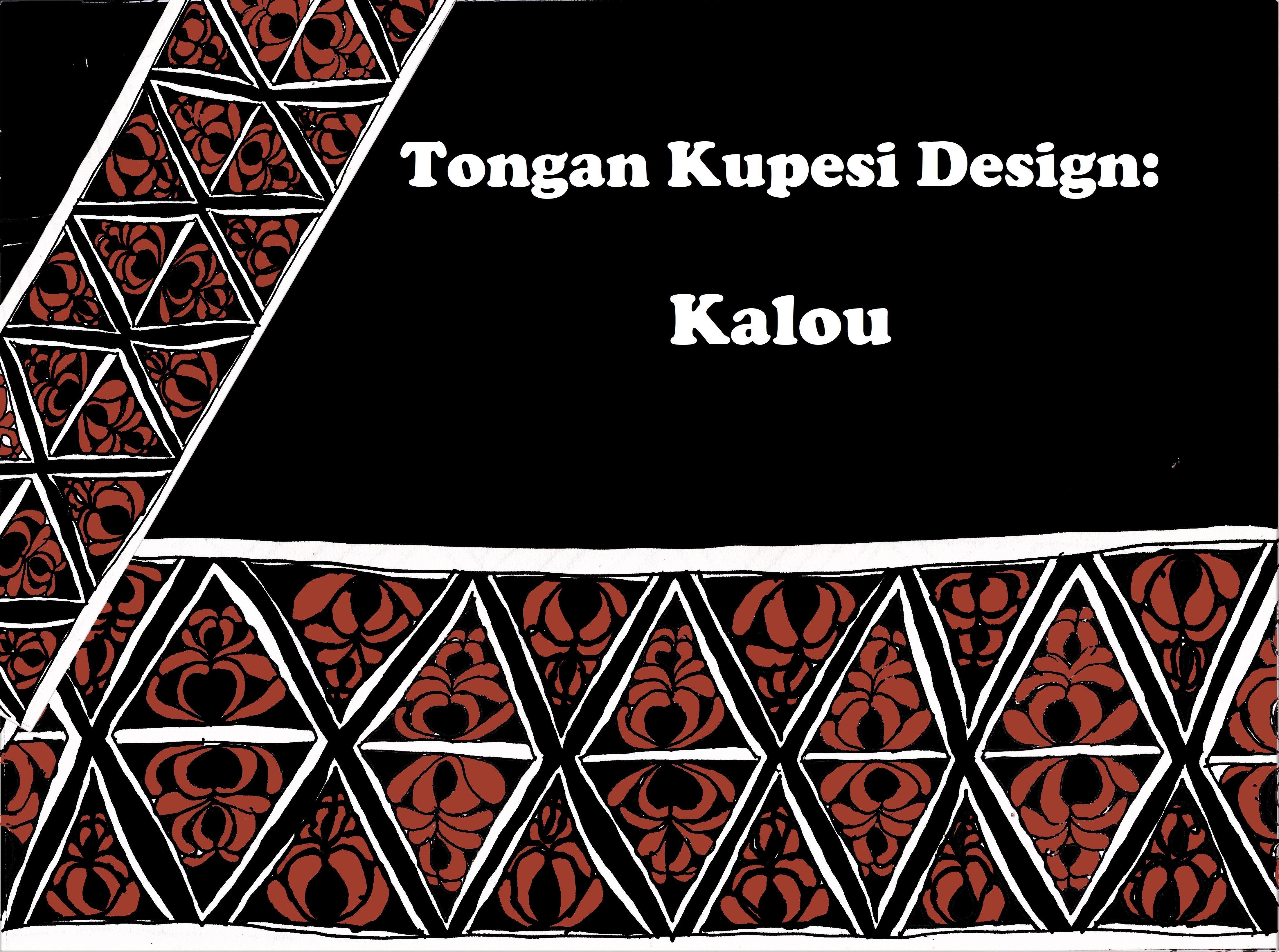Tongan Kupesi Design: Kalou
I'm seated in my house, surrounded by kupesi drawing on tapa cloth in frames, and my eyes are drawn to one called the Kalou, which translates into a variety of breadfruit. The TV suddenly switches on, and on the screen there is a memory of me seated in the artist studio learning kupesi designs.
My Tongan Kupesi Workshop Facilitator tells me how the drawing represents a variety of breadfruit and leaves. The middle circles are like a soccer ball, with leaves on either side of the fruit, then repeated on top of each other, and they are presented symmetrically inside a diamond-shaped motif that gets repeated.
There are many tapa cloth breadfruit designs as she shows me the varieties across Polynesia.
I remember seeing them painted on tapa cloth, so I asked how it is made. I knew breadfruit bark was beaten to create the tapa cloth.
The Kupesi Workshop Facilitator added that while that's one of the traditional methods, these days, they use the bark of the mulberry tree which is softer.
Seated back on my couch, watching the television flicker off, I'm fascinated with integrating the breadfruit into my art as a design.
I recall the big breadfruit tree at the side of Grandpa's house and how we climbed it on our holidays there. We shallow fried the yellow flesh of the breadfruit in the frying pan. It has a texture like hot potato chips, but I have not had it since I was eleven.
I remember going to the kingdom of Tonga when I was seven and eight, and the family used to panfry breadfruit that we'd eat it like hot chips. The soccer ball-sized fruit wasn't available during our winter visits, so our family would save it for us in the freezer.
How disappointed was I in my twenties being told by my mother: "You're not kids anymore. You don't need breadfruit. You are an adult now."
There are breadfruit symbols in cultural drawings all over Polynesia, and the symbolism of this remarkable food forms a significant part of many lifestyles, not just in Tonga.

